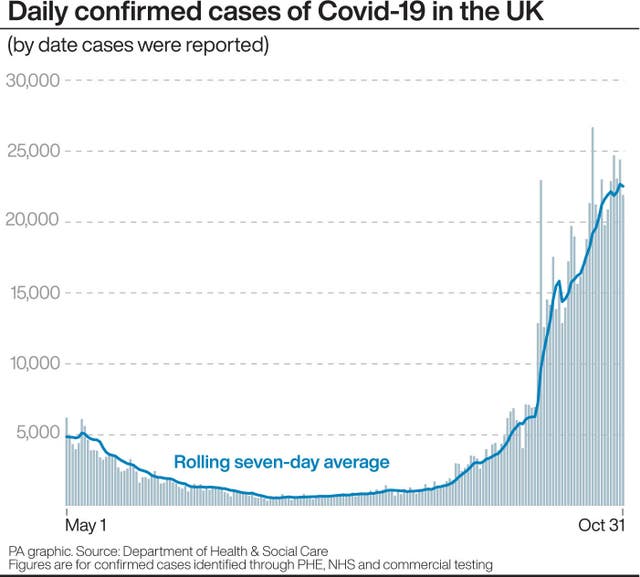How does the second lockdown differ from previous restrictions?
The Premier League, outdoor exercise and educational settings will see greater freedoms that during the spring lockdown.

There will be some key differences between England’s new coronavirus lockdown, which begins on Thursday, and the UK’s nationwide restrictions introduced in March.
One of the biggest changes, no doubt welcomed by millions of parents, is that schools will stay open during the envisaged month-long lockdown. In March, they were closed to all pupils except children of key workers.
Nurseries, colleges and universities will also stay open, but university students have been told not to return home during term time, although at this stage they will be able to leave campus for the Christmas holiday.
After-school provisions and sports clubs will be suspended, but playgrounds and parks will remain open.
People are allowed to leave their home for outdoor exercise as many times per day as they want, contrasting with the contentious and difficult to police “once a day” rule of the spring.
Such activity can be undertaken with other members of your household or one person from another household (a “one plus one” rule) that was not in place earlier this year.
Examples of recreation include meeting up with a friend in the park for a walk or to sit on a bench and eat a sandwich.
People are still allowed to go out for medical needs, to care for the vulnerable, or shopping for necessities, but these journeys should be as seldom as possible.
Places of worship will again be closed to most forms of communal gathering, but they can remain open for private prayer, unlike in the first phase of lockdown.
Funerals will be limited to a maximum of 30 people, although it is advised that only close family members attend. Headstone settings and the scattering of ashes should have no more than 15 people.
Weddings, civil partnership ceremonies are only allowed in “exceptional circumstances”.

Formal shielding for the vulnerable will not be reintroduced, unlike in spring when at-risk people were told not to leave home for any reason and extra support was on offer including food parcel deliveries.
However, the age definition of “clinically vulnerable” has been lowered to 60, down from 70 in the first lockdown.
“These changes will mean many hundreds of thousands of people will now be classed as clinically vulnerable when in spring they were not,” Paul Hunter, professor in Medicine, University of East Anglia, said in a statement issued by the Science Media Centre.
“Shielding has not been reinstated but it is important for people in this age group to realise they are more vulnerable to severe disease if they catch the infection.”
One major difference likely to be widely welcomed is that football and a range of other professional sports will be allowed to continue, unlike earlier in the year, albeit still without crowds in stadiums.
The Premier League season was suspended on March 13 and did not resume until June 17, with game broadcast originally free-to-air but are now mainly pay-for-view or via subscription packages.
“In a lockdown, it’s really important for the people that they can do things they like to do,” Liverpool manager Jurgen Klopp said on Saturday.
“Watching football is obviously something they like to do, so I’m happy that we can continue that.”

While this latest lockdown for England features some more relaxed characteristics than the first, perhaps a more sobering difference comes in the envisaged length of the restrictions.
Prime Minister Boris Johnson said he expects the lockdown to remain in for four weeks until December 2 – but those with longer memories will recall the March measures had an expected timeframe of at least three weeks.
The other major change is that the rules were broadly the same across all of the UK in March, but the devolved governments in Scotland, Wales and Norther Ireland now have their own measures in place and have yet to indicate if they will match the new English provisions.
Wales is part way through a 17-day “firebreak” lockdown which started on October 23 and will last until November 9.
The majority of Scots will be placed into Level 3 of a new five-tier system from Monday, with the rest of the country in either Levels 1 or 2. This follows restrictions across the central belt of Scotland that saw pubs closed in October and other restrictions on alcohol sales.
In Northern Ireland, pubs and restaurants were closed for four weeks starting on October 16 with the exception of takeaways and deliveries. Schools were closed for two weeks.





